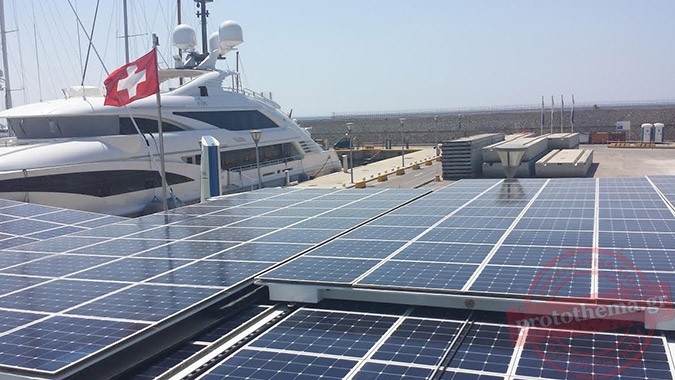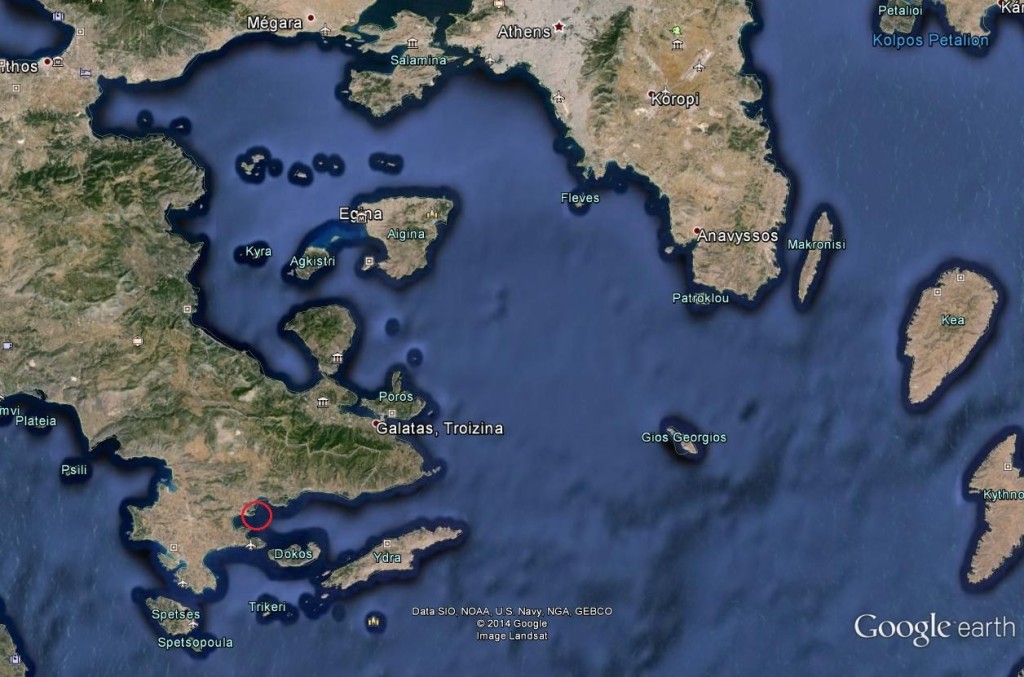MS Turanor Planet Solar, the world’s biggest solar Catamaran that is powered exclusively by solar energy has finally docked at Marina Zea at Piraeus within the framework of an archaeological mission known as “TerraSubmersa”. Details of the Archaeological mission taking place in Argolis from August 6-22 were announced in interviews on board the catamaran this morning.
The archaeological research being conducted concerns the exploration and the topographic surveying of a prehistoric settlement in the sea area of Hermione in Argolis. Swiss and Greek archaeologists will take part in undersea explorations to look for traces of human activity in an area were one of the most ancient settlements in Europe once existed.
The 31-meter Swiss-flagged catamaran belongs to the Swiss PlanetSolar that is currently used as a floating laboratory of the University of Geneva. The name – borrowed from the “Lord of the Rings” trilogy by J.R.R. Tolkien means the “power of the sun”.
The boat was designed by New Zealander Craig Loomes and works exclusively with solar energy through photovoltaic panels of 5,381.96 square feet, powering with 93 kW four electric motors. At night, it draws its energy from lithium batteries weighing 8.5 tons. In fact it is able to travel for 72 hours in absolute darkness. The vessel launched in March 2010 and in the following September became the first solar-powered vessel to circumnavigate the world in a 584-day journey.
The archaeological site
On July 17, 1955, a group of four friends at around the age of 17 found themselves on an isolated beach across the coast of the isle of Spetses. The idea was the brainchild of Adonis Kyrou (pictured as he is today) – son of the editor of historic Greek newspaper Estia – who was captivated by the dark sand that looked like volcanic debri. After digging a little they found tools in the debris. “We gathered as many objects as we could and took them to the General Directorate of Antiquities,” says Mr. Kyrou.
The ephorate showed no particular interest and Mr. Kyrou was asked to take back the findings.
Later, in the Sixties, the Livanos family acquired the ownership of a small island across from the Franchthi cave and wanted to develop the area.Seeing sand being moved from the area, Mr. Kyrou contacted the Ephorate of Antiquities in Nafplio this time and was taken more seriously. U.S. Archaeologists carrying out excavations in the area were asked to assist. The rest is history.Franchthi Cave was continuously occupied for about 35,000 years from Peleolithic to Neolithic times.It was eventually abandoned around 3,000 B.C. and scientists assume that the people who lived here built a village nearby.
The project – TerraSubmersa – brings together Greek and Swiss archaeologists who will carry geophysical measurements to reconstruct the original above-water, topography of the area before it sank. They will be assisted by the Hellenic Centre for Marine Research (ELKEThE) – a collaborator on this project. Other partners on this project include the University of Geneva, the Swiss School of Archaeology in Greece and the Greek Ministry of Culture’s Ephorate of Underwater Antiquities.












































